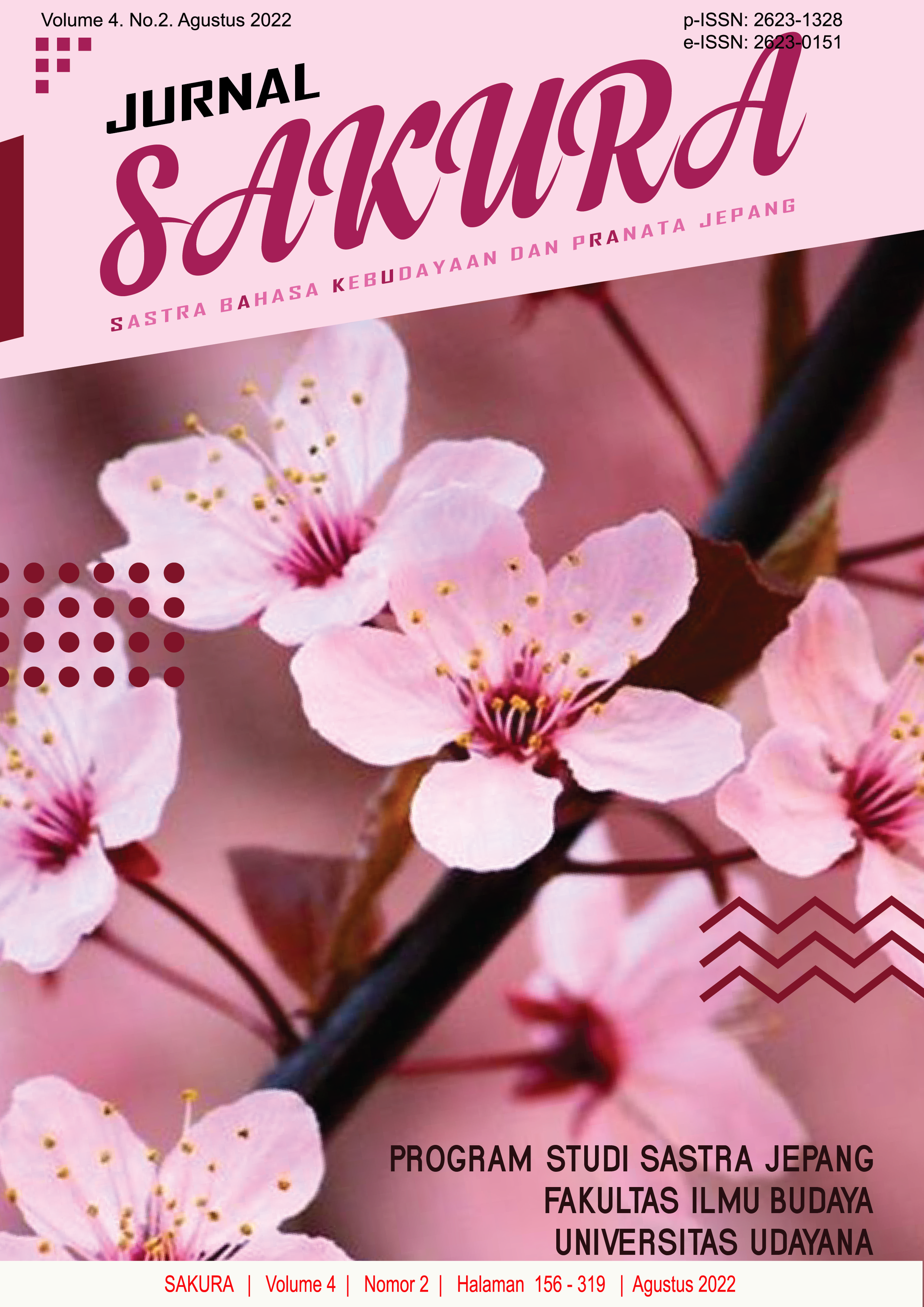Analisis Tindak Tutur Direktif dalam Drama 3 Nen A Gumi Karya Komuro Naoko dan Suzuki
Abstract
The purpose of this research is to analyze the intent and types of directive speech act expressions in the drama 3 Nen A Gumi. The subject used in this research is a Japanese drama entitled 3 Nen A Gumi. This research is a qualitative descriptive research. The method used in this research is the listening method with an advanced technique, namely the note-taking technique. In analyzing, using pragmatic analysis to examine the use of intent and types of directive speech act expressions. The theory used is the theory of speech acts according to Searle (1979) and the theory of types of speech act expressions proposed by Nadar (2008). From the results of the research, it was found that 54 data were directive speech acts. There are 9 intents of directive speech acts found, namely request, entreat, question, invite, command, challenge, forbid, permit, and advise. Furthermore, it is known that directive speech acts are expressed by direct speech and indirect speech according to the context of the speech situation. There are 39 direct speech data and 15 indirect speech data.
Downloads
References
Chino, Naoko. 1991. All About Particles. Jepang: Kodansha Amerika, Inc.
Gunarwan, Asim. 2007. Pragmatik Teori dan Kajian Nusantara. Jakarta: Universitas Atma Jaya.
Iori, Isao. 2000. Shokyuu o Oshieru Hito no tame no Nihon Go Bunpou Handobukku. Tokyo: 3A Corporation.
Kawashima, Sue. 1999. A Dictionary Of Japanese Particles. Jepang: Kodansha Internatinal.
Leech, Geofrey. 1993. Prinsip-Prinsip Pragmatik. Jakarta: Universitas Indonesia.
Lestari, Dwi Tiara. 2017. Kesantunan Tindak Tutur Direktif Larangan dan Izin Dalam Drama Jepang Kazoku Gemu. Skripsi. Program Studi Sastra Jepang. Fakultas Ilmu Budaya. Universitas Diponogoro.
Matsura, Kenji. 1994. Kamus Bahasa Jepang-Indonesia. Kyoto: Kyoto University Press
Nadar, F.X. 2008. Pragmatik & Penelitian Pragmatik. Yogyakarta : Universitas Gadjah Mada.
Namatame, Yasu. 1996. Nihongo Kyoushi no tame no Gendai Nihongo Hyougen Bunten. Jepang: Kabushiki Kaisha Honjinsha.
Rahardi, Kunjana. 2005. Kesantuanan Imperatif Bahasa Indonesia. Jakarta: Erlangga.
Rohmadi, Muhammad. 2004. Pragmatik Teori dan Analisis. Yogyakarta: Lingkar Media.
Searle, John R. 1979. Exspression and Meaning. New York: Cambridge University Press.
Syah, Nur Aini. 2017. "The Politeness of Directive Speech Acts in Satu Jam Lebih Dekat on TV One". Prasasti, Volume 2, Nomer 2 (hlm 300-315).
Tarigan, Henry Guntur. 1986. Pengajaran Pragmatik. Bandung: Angkasa.
Teza, Dwi Putri. 2019. "Tindak Tutur Direktif Pada Novel Bidadari-Bidadari Surga Karya Tere Liye". Jurnal Ilmiah Korpus, Volume 3, Nomer 1 (hlm 108-122).
Yule, George. 2006. Pragmatik. Yogyakarta: Pustaka Pelajar.













